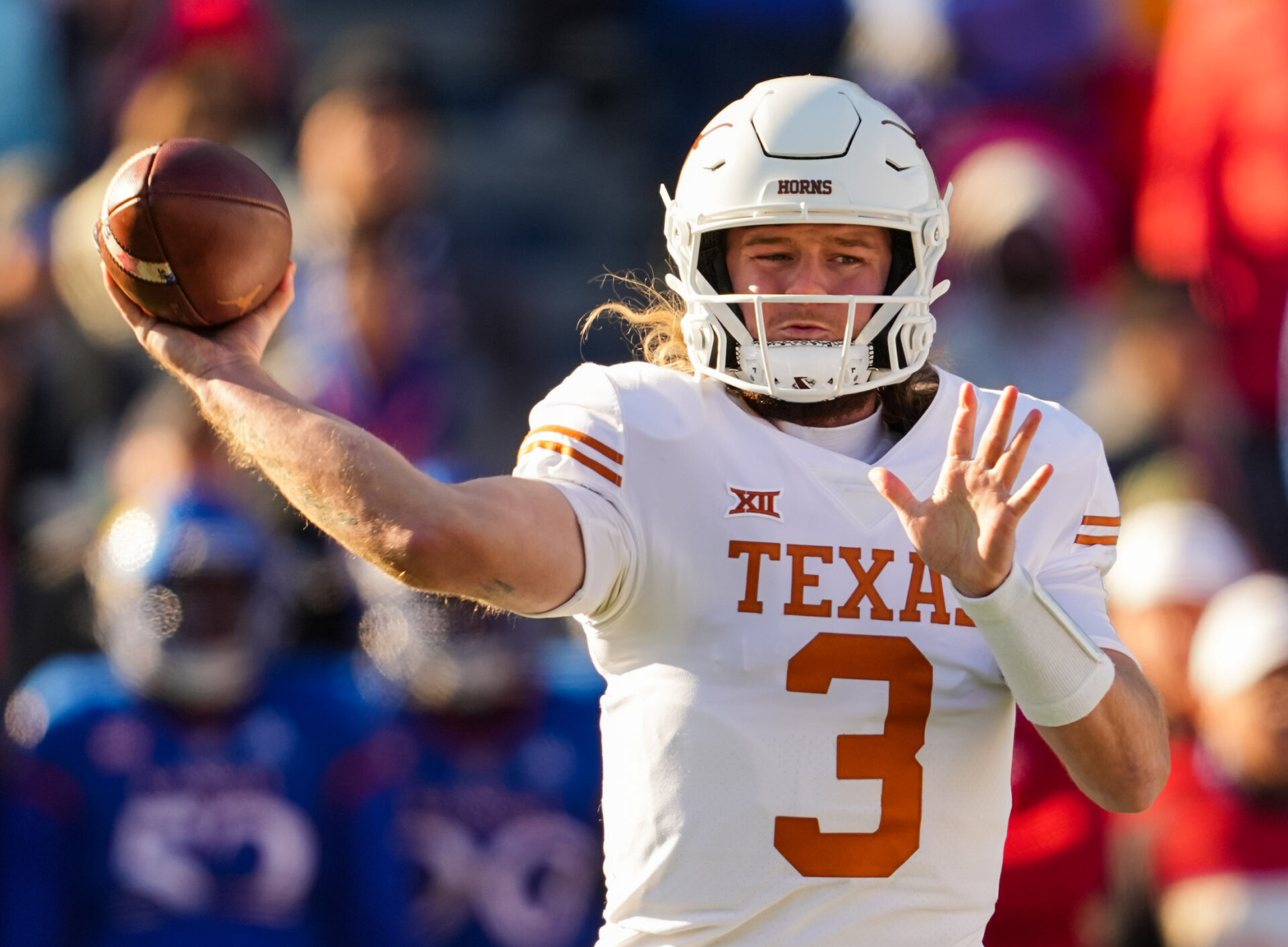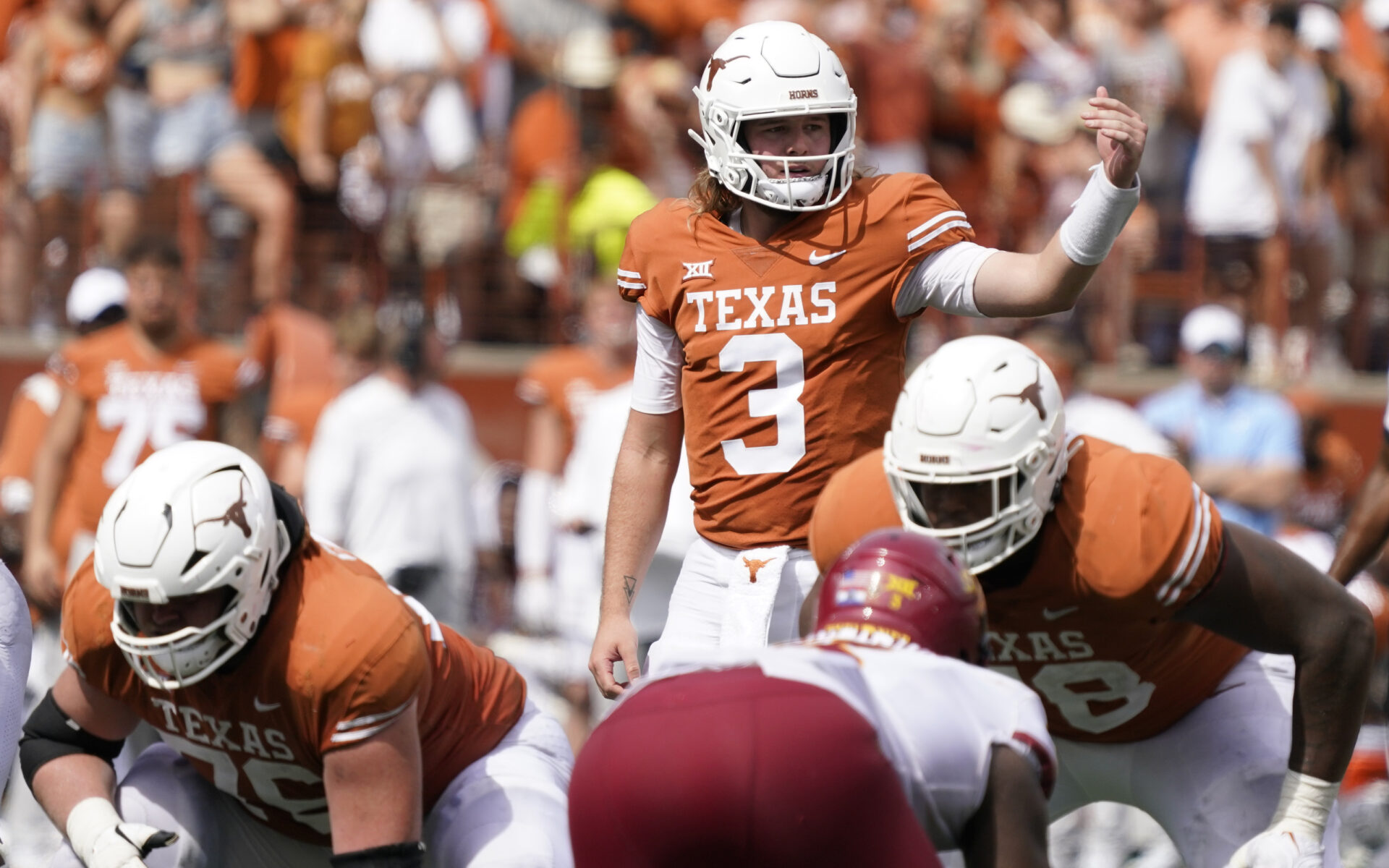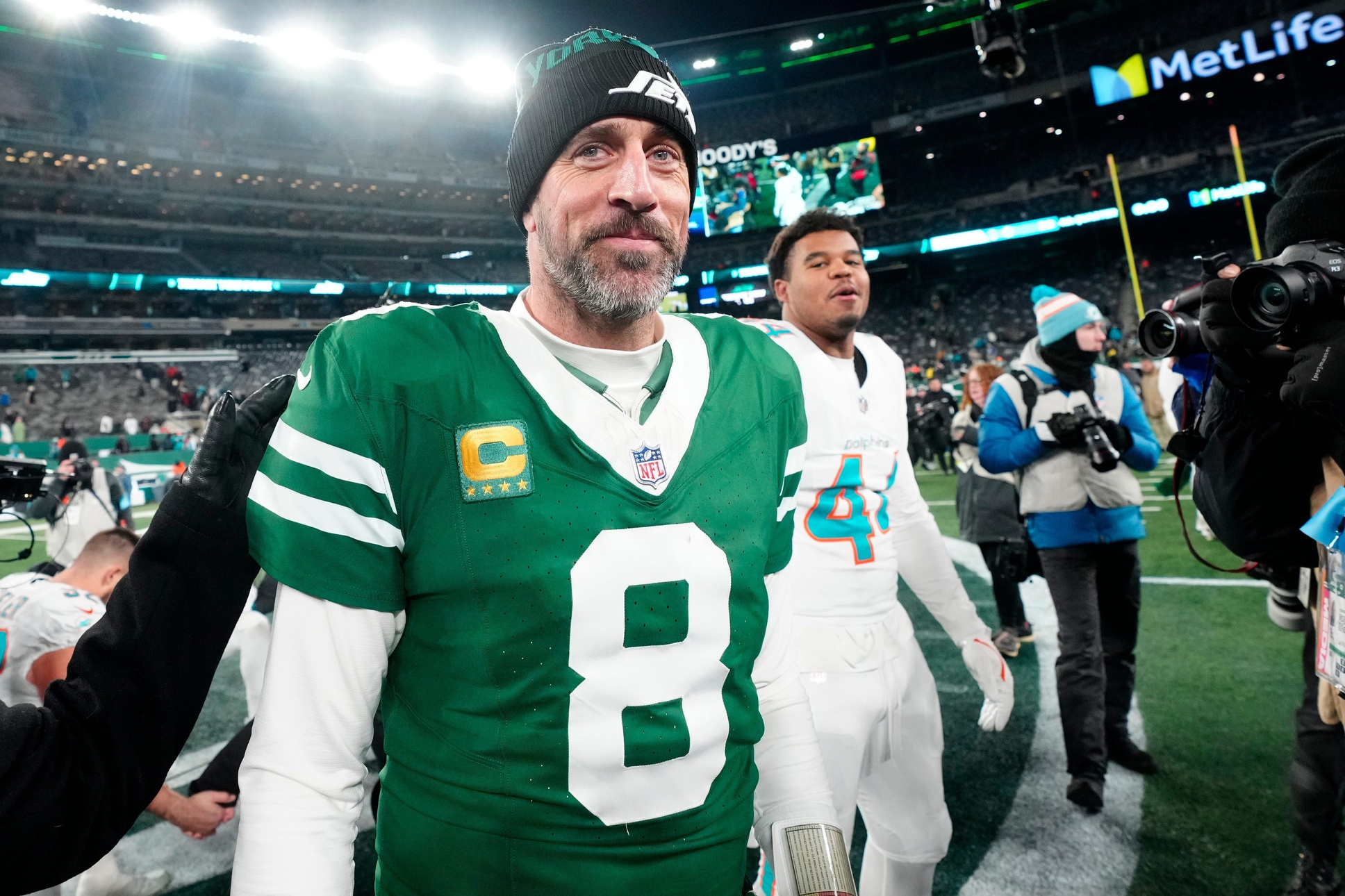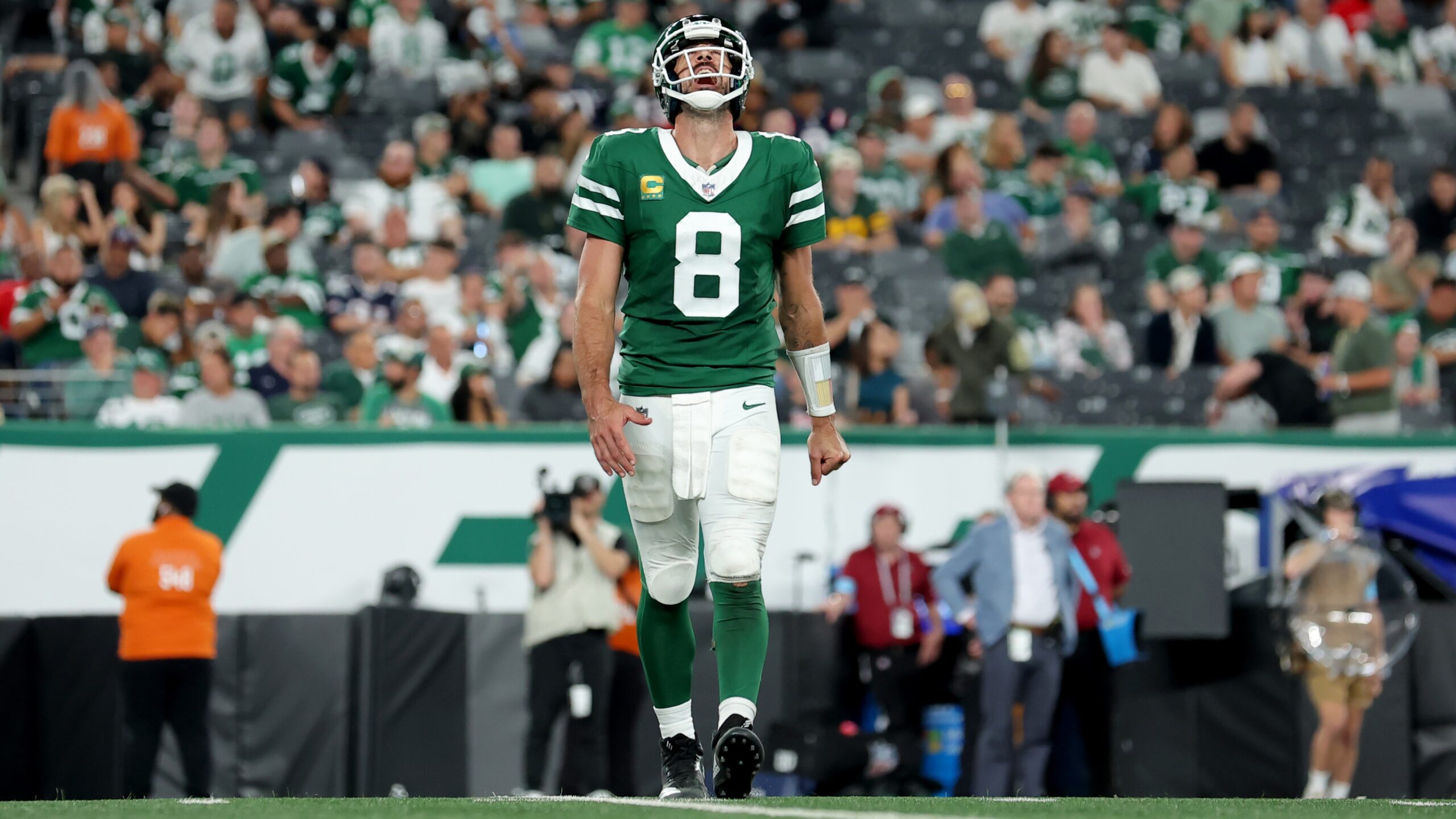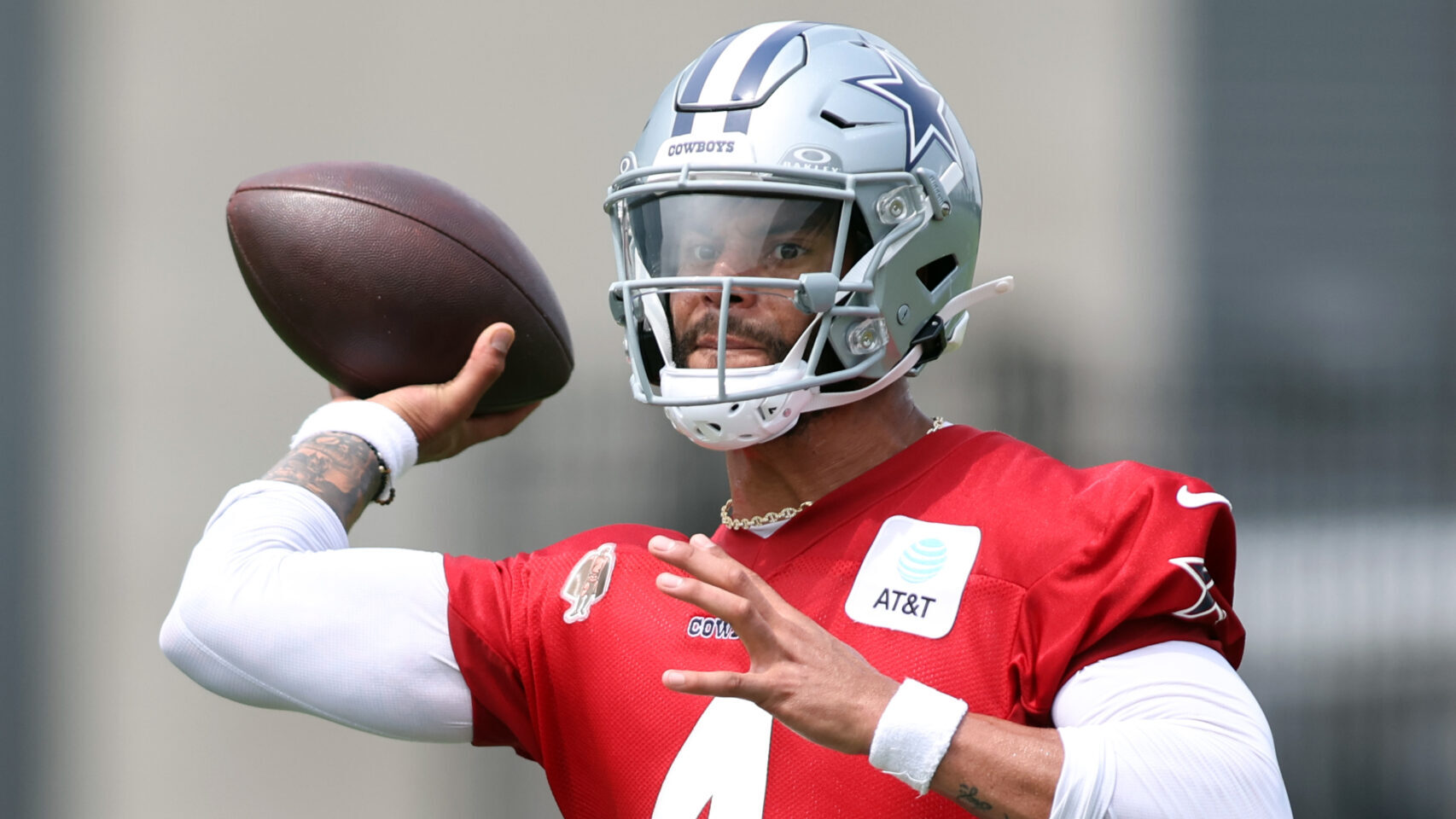Analysis
6/21/23
8 min read
Texas' Quinn Ewers Displays Big Upside With Work to Be Done
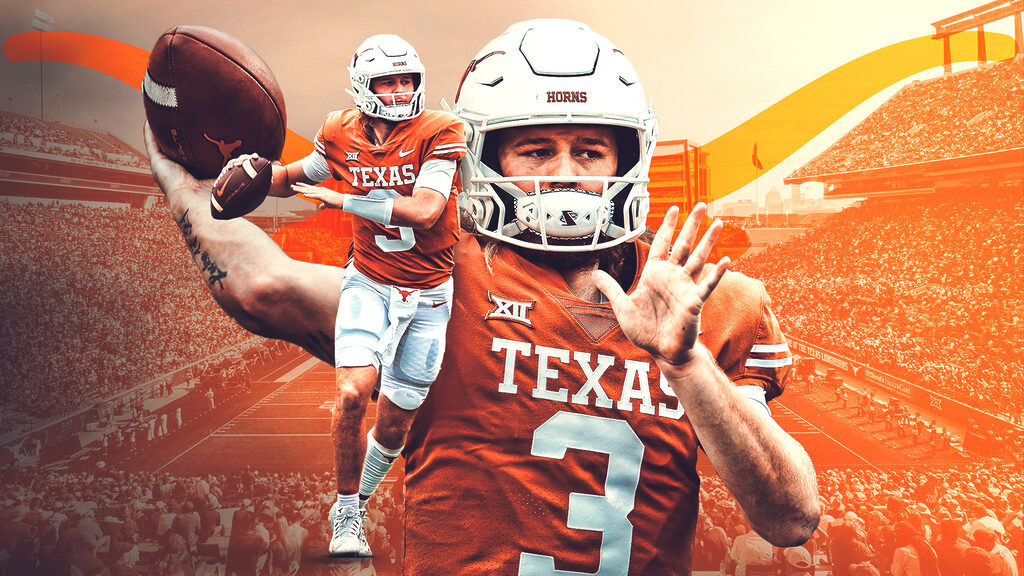
Marc Trestman continues his evaluations of the top quarterback prospects eligible for the 2024 NFL Draft with a breakdown of Texas QB Quinn Ewers’ and how he might translate to the next level.
Others in series: Drake Maye | Caleb Williams | Michael Penix Jr. | Bo Nix | Jordan Travis | Joe Milton
Quinn Ewers Evaluation
Games Watched
- Alabama
- Oklahoma
- Iowa State
- Baylor
- Washington
Who is Quinn Ewers?
Of all the quarterbacks I have evaluated for The 33rd Team in the past year, Quinn Ewers is the most polarizing.
As the nation’s No. 1 high school recruit in the class of 2021, Ewers reclassified to leave Southlake Carroll in suburban Dallas after his third year of high school. He redshirted at Ohio State in 2021 behind C.J. Stroud before transferring to the University of Texas, where he quickly won the starting job.
As a redshirt freshman in 2022, Ewers had an uneven campaign and traveled the spectrum of inconsistencies. In 10 starts, the Longhorns went 6-4, with Ewers throwing for 2,177 yards, 15 TDs and six interceptions while completing only 58.1 percent of his passes.
At just 20, the 6-foot-2, 206-pounder is the youngest of any of the quarterbacks I have evaluated recently and the closest to a true gunslinger.
What Was Ewers Asked to Do?
In Steve Sarkisian’s offense, Ewers led a dynamic attack. The Longhorn passing game is as aggressive as any in college football. The vertical game comprises common NFL concepts executed from multiple and creative formations. Texas’ offensive philosophy gives Ewers the opportunity to show his impressive arm talent by throwing the ball all over the field from drop back, play-action and movement passes to the right and left.
While I saw evidence of Ewers getting through progressions, he was typically only asked to read half the field while in the pocket.
What separates Texas' passing game from most other college offenses is Sarkisian’s use of six-, seven- and even eight-man protections. As an offensive coordinator, the ability to understand and vary protections during a game is a top priority. These heavier protection schemes (as opposed to typical five-man protection) allow quarterbacks to take deeper dropbacks and throw to deeper and more established routes.
While no single protection guarantees success, varying protection schemes like Texas does create uncertainty defensively on how to rush the passer. It also creates confidence and poise in the quarterback to stand in the pocket.
Sarkisian’s offense also provides a variety of platforms outside the pocket to neutralize the pass rush and protect the quarterback, including some unique throwback rollout passes.
I did not see quick-answer hot options in the five games I watched when protections could not handle a plus-one (unblockable) defender. It was up to Ewers to make a play in those few instances.
In those games, he completed an impressive 68 percent of his 132 attempts with eight TDs and only one interception, which was significantly better than his numbers across the full season. It’s clear why he was touted so highly coming out of high school. Yet, it's also clear he has significant room to improve.
Evaluating Ewers' Physical Traits
At times, I found Ewers’ flashes of brilliance contrasted with his lack of consistent accuracy.
Mechanically, Ewers sometimes shows disciplined footwork from the shotgun on his three- and five-step drops. On these occasions, he has a strong athletic base and a short step transfer of weight from his back foot to his front foot toward his target before following through with a smooth and sudden release.
With his nimble footwork and fluid hips, Ewers is capable of looking like the prototypical NFL pocket passer with elite mechanics. It can be easy to get excited because the ball appears to explode out of Ewers’ right hand. While he can drive the ball when needed, he also instinctively and easily changes ball speeds and trajectories, throwing a very catchable ball to all widths and depths.
That said, these flashes are too far and few between. Overall, Ewers is inconsistent, which primarily stems from his free-wheeling mechanics. On short and deep passes, there are poorly located throws littered throughout his tape and passes thrown out of bounds where he doesn’t give his intended receiver a chance to make a play. Even on some of his completions, Ewers has placement and accuracy issues, preventing receivers from maximizing the run after the catch.
Ewers has a unique and impressive ability to vary his arm slot, but he often does so unnecessarily. That can lead to inaccuracy and misses on easy throws. It almost feels like this is unintentional – like he releases the ball with whatever delivery he feels is natural at the time. Sometimes he looks like a second baseman trying to turn a double play. The problem is he’ll do this even when he is free in the pocket and has the space to step and complete a fundamentally sound throwing motion.
Additionally, Ewers’ carriage of the ball in the pocket is often low and outside his frame, which costs time in his delivery, is a ball security violation and can lead to inaccurate throws. As mentioned in my profile of Oregon’s Bo Nix, Ewers should take a look at the video of Joe Burrow’s ball security in and outside of the pocket in his last season at LSU as an example of how to secure and protect the football properly.
Evaluating Ewers's Mental Approach
When evaluating his poise and mental capabilities, Ewers appears advanced for a 20-year-old, but he still makes many mistakes typical of a young signal-caller.
As a decision-maker, Ewers can quickly process and immediately get the ball out of his hands, though his decisions can be careless at times. Still, his quick processing ability will serve him well in the future.
He also impressed me with his poise under pressure, ability to read coverages and flashes of high-level anticipatory throws.
Within the pocket, Ewers has a natural ability to slide or step up and find quiet areas behind his protection to deliver. He inherently senses and escapes pressure with relative ease and is a dangerous playmaker with his arm outside of the pocket despite having only sufficient athleticism while on the move. Ewers will show good eye discipline and resourceful playmaking, sometimes leading to excellent “it” factor plays.
I also have some concerns about his running ability to periodically extend plays with his legs when things break down because I saw little of it. Ewers has not shown the ability to be a legitimate rushing threat, running for -52 yards (including sacks) and one TD in 2022.
Across each of the five games, Ewers made several “wow” plays that whet a viewer’s appetite. Yet, it's apparent he has significant room to grow in terms of his play-to-play consistency.
Comparing Ewers to Other Quarterbacks
If Ewers can remedy his mechanical inconsistencies, he will become a more accurate and efficient passer. As quick-minded as he is and able to get the ball out from undisciplined positions, simply improving his staging and being more intentional with his arm slot unquestionably will lead to enhanced accuracy and placement.
When comparing Ewers’ ceiling to other quarterbacks I have studied for The 33rd Team, it's clear there are flashes of Tier 1 ability that make him worthy of comparison to the likes of Caleb Williams, Drake Maye, Bryce Young and Stroud. At his best, he has the natural talent to match the abilities of those players. However, he is much further away from his ceiling than any of them at the time of my evaluation.
Like all the previous quarterback evaluations, we must remind ourselves that film study alone is not how future NFL starters are evaluated. I made this clear in my most recent evaluation of Florida State’s Jordan Travis, whose overall play in 2022 was markedly better than Ewers.
The vetting of an NFL quarterback prospect is an exhausting process on multiple levels. What is yet to come are the in-person meetings in the classroom and on the field with coaches and scouting personnel, as well as intense background checks.
I am interested to learn about the type of person Ewers is, including his character, work ethic and leadership qualities. This will be significant in determining whether or not he has the discipline to reach his fullest potential. Based solely on the tape, he appears coachable. And he seems capable of doing things fundamentally and mechanically that will enable him to succeed at a high level in the NFL.
His ceiling is very high, and his road to greatness starts with the No. 1 job of any quarterback — taking care of the football.
At such a young age, Ewers has plenty of time to develop before reaching his physical peak. This is an exciting young man who can absolutely fulfill the promise of his No. 1 high school ranking.
Marc Trestman is a former NFL, CFL and college coach. After more than a decade as an offensive coordinator and quarterback coach in the NFL, he coached in four Grey Cups in the CFL, winning three over seven years with Montreal and Toronto before becoming head coach of the Chicago Bears. Follow him on Twitter at @CoachTrestman.

